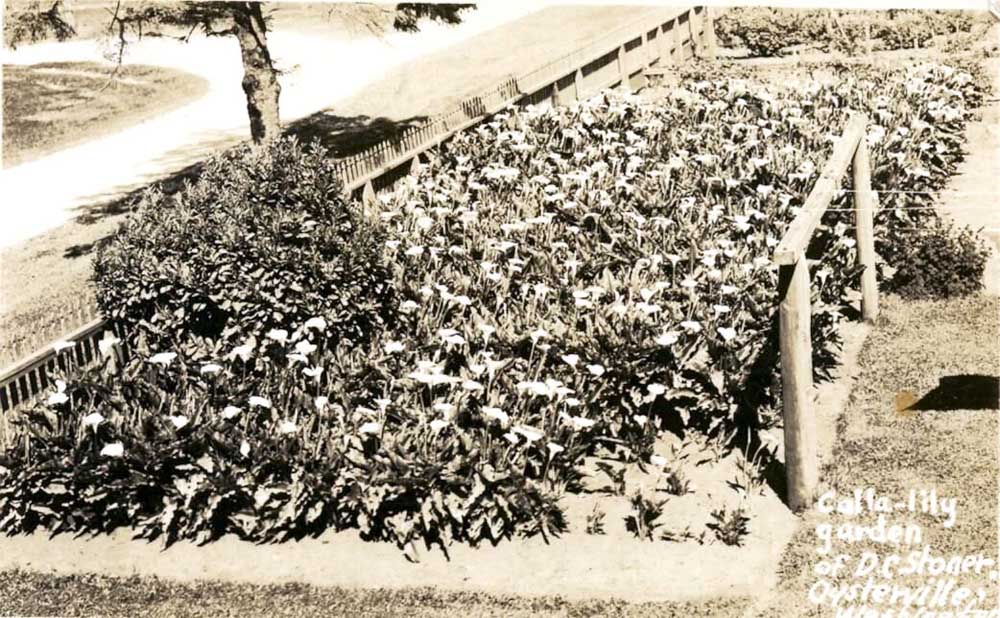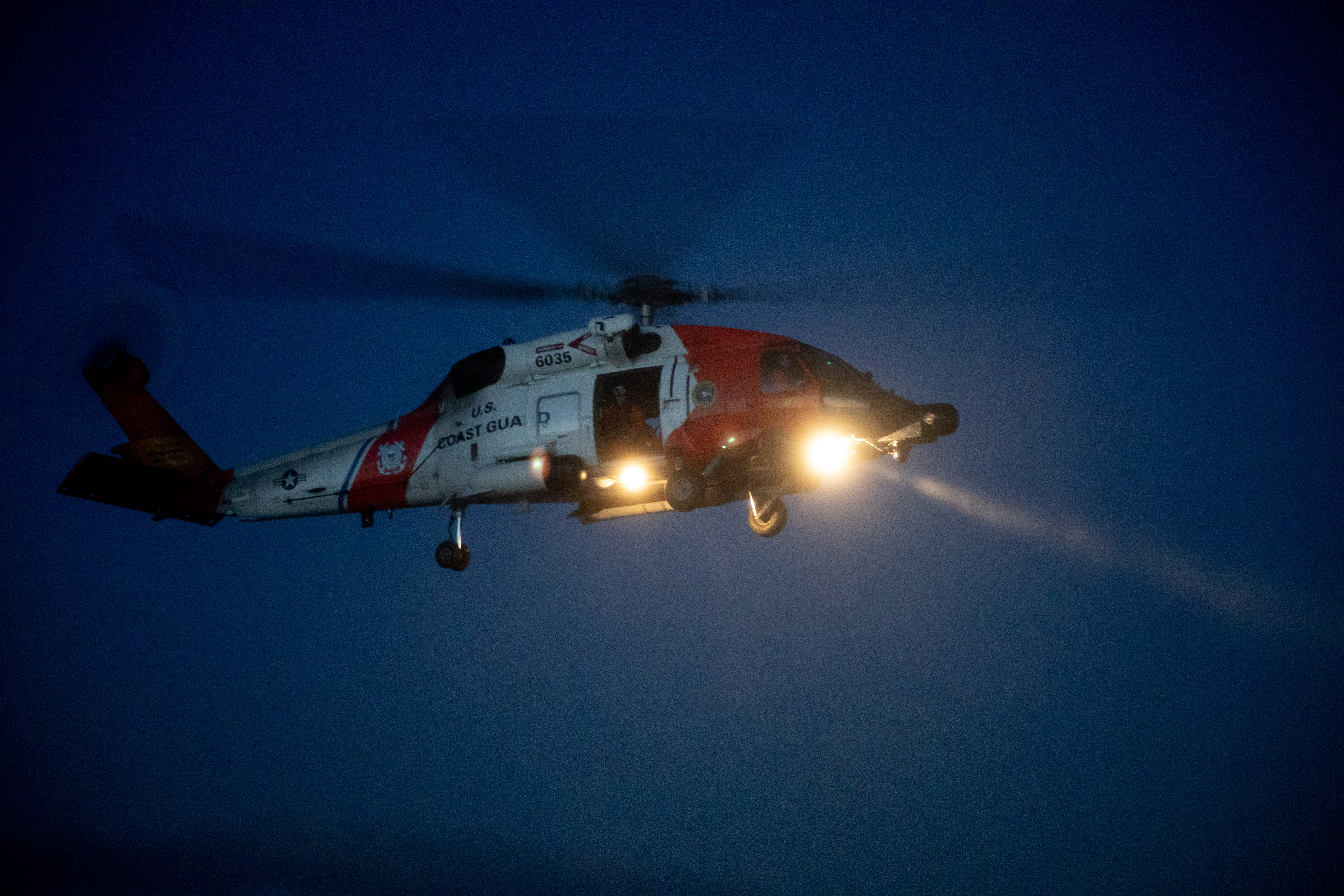Saints or Sinners? Characters of Pacific County: Priceless memories of Oysterville’s early days
Published 11:02 am Thursday, July 18, 2024

- This “picture postcard” of D.C. Stoner’s calla lily garden was taken and produced by Peninsula photographer Charles Fitzpatrick.
Dewitt Stoner 1873-1955
I was 19 when Mr. Stoner died — just a few years older than he had been in 1885 when he arrived in Oysterville. I remember him as a quiet, old widower who lived on the southeast corner of Oysterville and Territory roads. He had a wonderful calla lily garden — “Lilies of the Nile” he called them — and, when they bloomed, he shared armloads of them with all the women of the village.
He worked at the Klipsan Beach Life Saving Station until he retired full-time to Oysterville. He originally arrived here in the spring of 1885 with his brother and family. “We lived in a house, a three-room house, right where the Baptist Church stands now,” he told my Uncle Willard Espy. “The alder grove came right down to the house. Quite a number of times my brother called his wife to get breakfast. Then he’d kill a deer in the alders, dress it and have it hanging outside the house by the time breakfast was ready. In them days we didn’t have any meat problem. We just took a gun out and got it.”
The priceless legacy that Mr. Stoner left were his detailed descriptions of Oysterville “back in them early days….” It is perhaps the best picture of the village when it was at its height as county seat. Not many years after his arrival, the 1891 Ninth Edition of the Revised Encyclopedia Britannica contains a full-color, foldout map of Washington state. It must have been a hot-off-the-press edition since the Territory of Washington had achieved statehood only two years before. On that map, Oysterville is noted in larger letters than Seattle. Apparently, the editors of the encyclopedia considered Oysterville, not Seattle, a name to reckon with.
When I first come here, there was about 5 stores. One on the street out in front of the Heckes place — Crellin’s. He was one of the first settlers in the oyster business. Al Carruthers had it when I came here, but it was still called Crellin’s. It was a general country store. And there was a dry goods and hardware store where the community hall stands. I.S. Jones had that one. There was one on the corner of my lot here — a general store run by Bark and Brookman. Brookman later started a store across from where Heckes’ garage is now.
The Brisco Store was across the intersection on the west side of the street going north and south. It was a big two-story building with a dance hall and skating rink above the store building. John Morehead’s father was driving the stage when I come. The stage departed according to the tide. It tried to leave at 6:30 or 7:00 in the morning — but sometimes it had to leave as early as four. It arrived back here about four or half past. There could be about 12 ride in the stage. The driver sat out on a high seat in front. Then, it could hold about eight or ten sacks of oysters tied on. When they got to Ilwaco the stage connected with a steamer going to Astoria. There was a two or three-horse freight wagon to haul oysters and whatever else was needed. The mail stage was also the passenger stage.
There was no plank road out to the sandhill. They needed an extra four horses to help them pull up the hill. If the freight team was going out, he’d start first and unhook his horses and hitch them up to the stage. Then when the stage was over the hill, it would unhook its four horses and help the freight wagon over, it took eight horses to get over that hill. When Nahcotta was started, the railroad come in. After that, from Nahcotta to here, the mail was carried by horse and wagon.
The social life then was far more than there is now. The Methodist church stood across from my lily patch. There were gatherings there two times a week. In them days there was lots of young people and there was parties and gatherings. There was dancing once a week. During Court Week there was dances twice a week.
There were gatherings there two times a week. In them days there was lots of young people and there was parties and gatherings. There was dancing once a week. During Court Week there was dances twice a week.
Court didn’t last over a week at the outside. Both hotels would be full and anybody who had any rooms to spare would have a chance to rent then out, too. People who was working in oysters would stay the year around at the hotels — Pacific House and Wirt’s Hotel across the street from where the Heckes folks live. In them days, why people who come to the beach on holidays, they would usually bring their tent and stay for three months at Ocean Park and Long Beach!
Most everybody that lived here at Oysterville had a small piece of oyster ground and made their living off the native oysters. A dock for sailboats went right straight out from the street runs alongside of my house here. You can still see the stumps at low tide. The dock was about a half a mile long. Most everybody who lived here had sailboats of their own. The sailboats was a very pretty sight — especially from the first of March to the first of June.
I am ever grateful to my Uncle Willard Espy for leaving me this transcription of his 1947 interview with Mr. Stoner (along with many other notes about Oysterville) that he hoped would one day become part of a book about his own childhood. How lucky we are to have this glimpse into our past from a kindly Oysterville neighbor of the early days!









